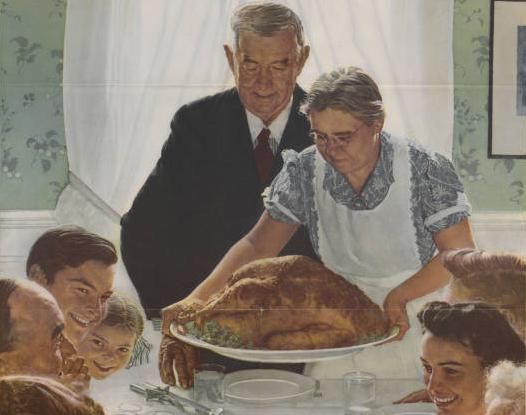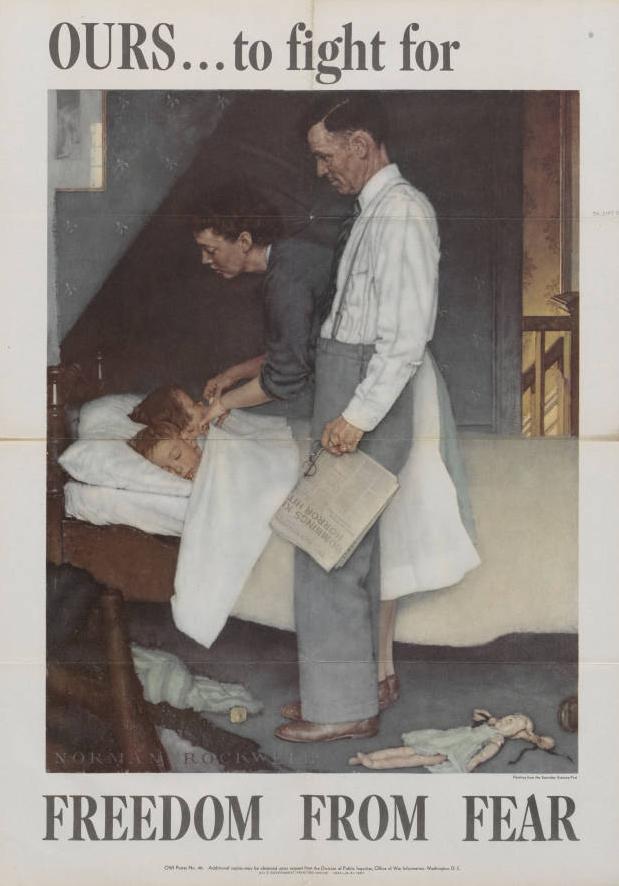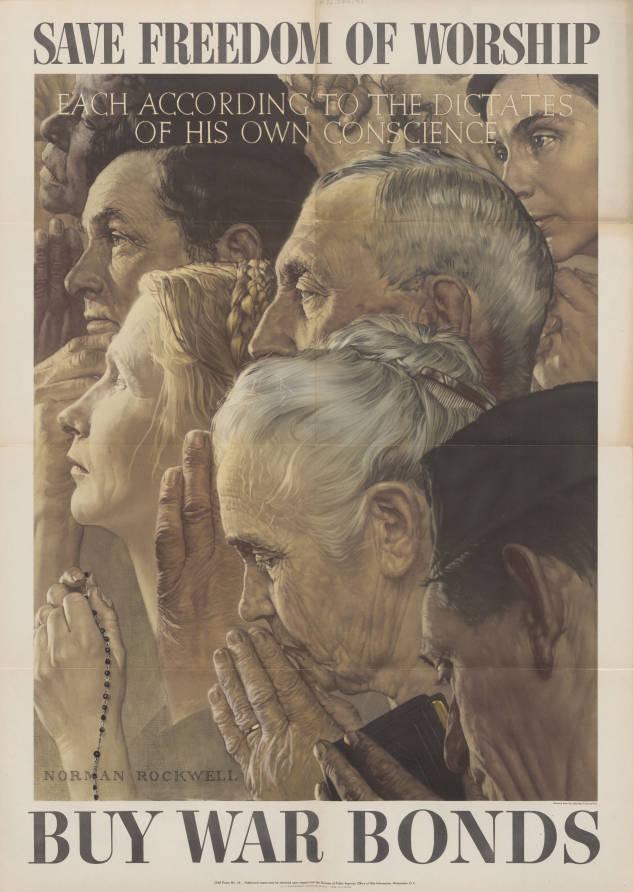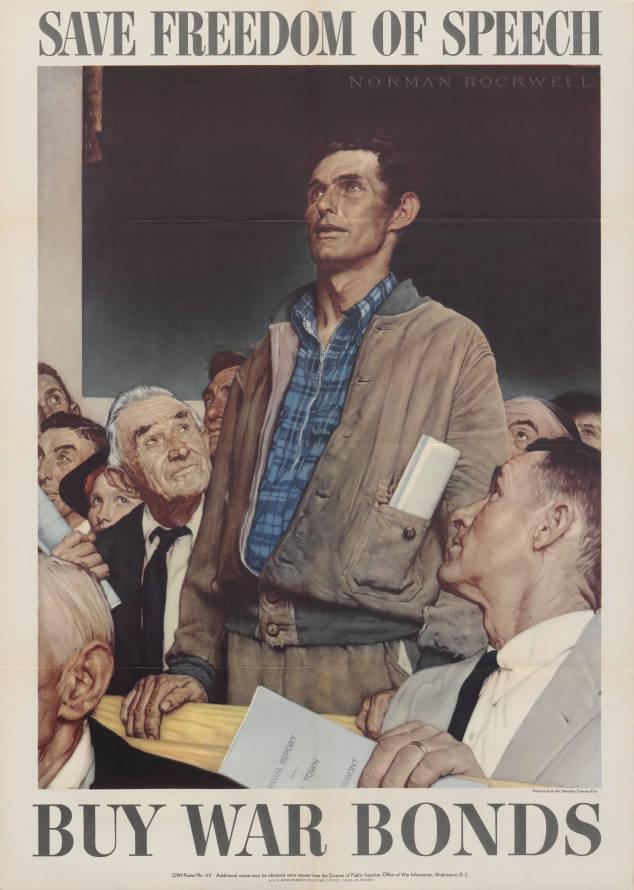Hope for Us All: Norman Rockwell’s Four Freedoms


In 1941, while war raged in Europe, President Franklin D. Roosevelt delivered a speech to Congress, “present[ing] a vision in which the American ideals of individual liberties were extended throughout the world.” This vision included freedom from fear, freedom of speech, freedom to worship in one’s own way, and freedom from want. The speech, and Roosevelt’s four freedoms, ultimately led 47-year-old American artist Norman Rockwell to paint one of his most beloved series, Four Freedoms.
Rockwell had begun his career in art as a teenager, first attending art school when he was fourteen and continuing on to the National Academy of Design (now known as the National Academy Museum and School) and, later, to the Art Students’ League of New York. He was hired at the age of eighteen as an illustrator for Boys’ Life, a magazine published by the Boy Scouts of America. Numerous magazine covers and other opportunities followed, and Rockwell’s career flourished.

By 1942, Rockwell was working for the Saturday Evening Post as an illustrator and also had a successful career as an artist. During a visit to the Pentagon to discuss illustrations for war posters, the need for artwork to illustrate Roosevelt’s four freedoms was relayed to him. Rockwell saw this commission as the opportunity of a lifetime, and set out to complete the series. Seven months, and a weight loss of ten pounds, later, Rockwell delivered his paintings.
Rockwell is known for portraying the common man in his artwork, and the Four Freedoms series is no different. He used members of his own community as models, placing them in settings that are familiar and comfortable. In fact, the male model prominently featured in Freedom from Fear appears in all of the Four Freedoms pieces. His Freedom of Worship features multiple ethnicities and religions, and his Freedom of Speech highlights the power of a lone dissenting voice and was, in fact, Rockwell’s favorite of the four paintings.

The images, first commissioned by the Office of War Information, have been used for war posters, urging people to buy war bonds; as covers of the Saturday Evening Post; as U.S. postage stamps; and as book illustrations. Freedom from Want has been recreated by the Muppets, by Lego, by the cast of the television show “Modern Family,” and others.
Though none are above critique – Rockwell himself saw Freedom from Want and Freedom from Fear as being “bland,” and critics have agreed – they remain beloved and iconic more than sixty years after their debut.
Today is the day after Thanksgiving here in the U.S., and so we would like to continue giving thanks for our blessings by sharing Four Freedoms with you, our Ohio Memory community. We hope that, whether you are seeing them for the first time or are revisiting them, they give you peace, strength, joy, and pride in our country, and that they give you hope for a bright future.
Thank you to Shannon Kupfer, Digital Initiatives Librarian at theState Library of Ohio, for this week’s post!



Leave a Reply
You must be logged in to post a comment.